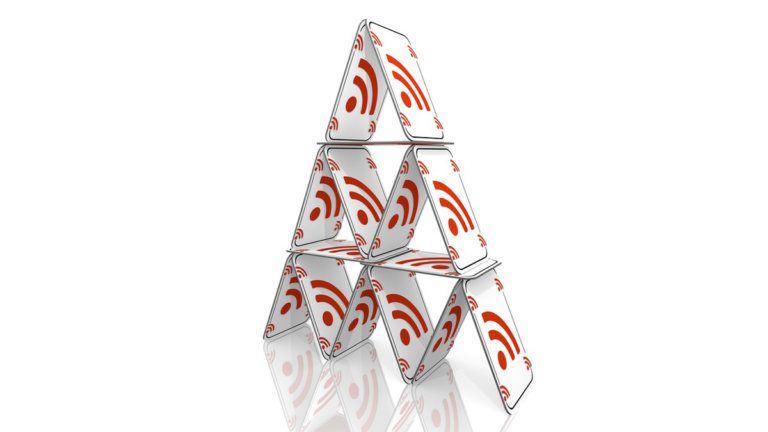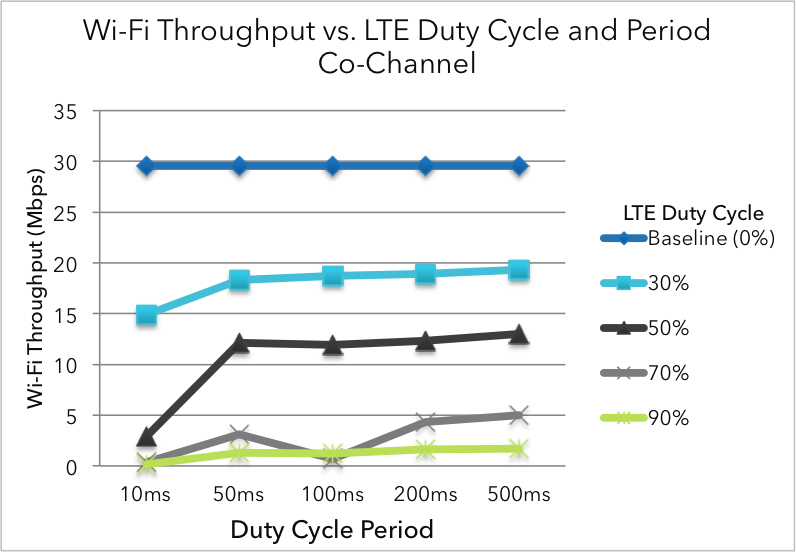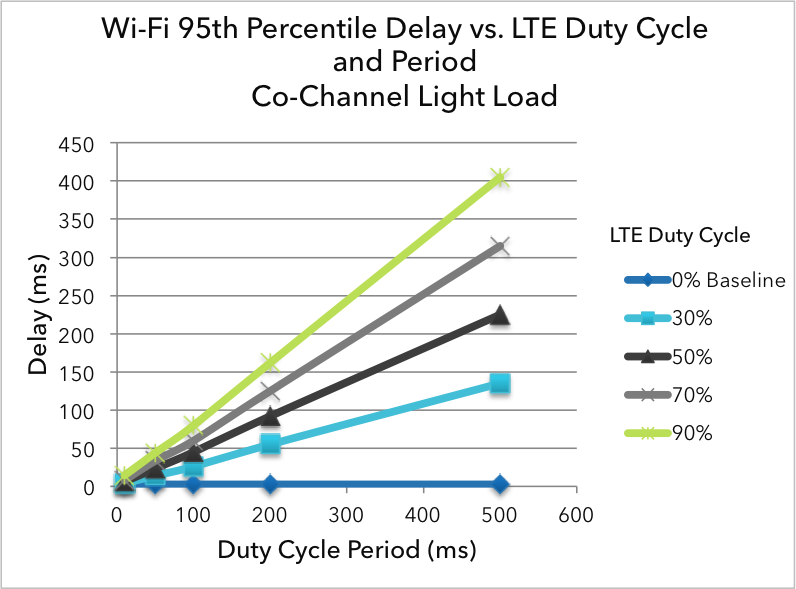Wireless
Wi-Fi vs. Duty Cycled LTE: A Balancing Act

In the second installment of my discussion on proposed LAA-LTE and Wi-Fi coexistence schemes, I am going to look at duty cycled solutions.
Let’s recap: We know that this new technology for unlicensed spectrum will be available only to mobile operators since the mobile industry standards body (3GPP) has decided not to pursue the ‘standalone’ version of LTE-unlicensed. (Hence the LAA acronym, which stands for License Assisted Access.) Much of our focus is therefore on ensuring that this new proprietary technology won’t disadvantage other users of unlicensed spectrum, like Wi-Fi. In my last post, I explored the impact of having LAA-LTE adopt “listen before talk” politeness standards, and found that they were not a coexistence panacea. Now let’s cover other politeness approaches.
Different from the LBT approaches discussed last time, duty cycled configurations do not sense the channel before transmitting. Instead, they turn the LTE signal on and off, occupying the channel for some period of time, and then vacating the channel to allow other networks (e.g. Wi-Fi) to access for some time. See Figure 1 for a simple visual of how a duty cycle works.
Figure 1
This approach has been proposed by various sources. The first reference we found was from a Nokia research whitepaper, but recently Qualcomm has also proposed an adaptive version they dub Carrier Sense Adaptive Transmission (CSAT) with a flexible duty cycle, while still others including ZTE in their recent 3GPP contribution are suggesting a time domain multiplexing “TDM” (another name for duty cycle) approach.
Duty Cycle %
Duty cycle configurations have two main knobs that define the on and off behavior, the duty cycle percentage and the duty cycle period. Essentially, the duty cycle is a repeating on/off pattern where the period defines how often the pattern repeats (usually in milliseconds for our discussion) while the duty cycle percentage is the fraction of the period that LTE is turned on. See Figure 1 for how these two are related.
Let’s first look at the duty cycle percentage. This configuration knob has a very easy to understand cause and effect relationship on coexistence.
Let’s take an example of Wi-Fi and LTE sharing a single channel. In general, the duty cycle of LTE will define the time split between the two networks because Wi-Fi is a polite protocol that does listen-before-talk (LBT). So if Wi-Fi were alone on the channel, it would get 100% of the airtime. If LTE joins the same channel with a 50% duty cycle, Wi-Fi would now get 50% of the airtime because it would sense the LTE and stop transmitting. In general this means Wi-Fi would get about 50% of the throughput it had in the 100% airtime case.
Now, notice above I said “in general” when talking about the duty cycle percentage? The predictable relationship described starts to break down if the duty cycle period gets really small. So let’s look more closely at the duty cycle period.
Duty Cycle Period
Of the duty cycle proposals described above, a primary difference is the scale of the duty cycle period being proposed. The Nokia Research paper studied the use of almost blank subframes (ABS) or blank uplink subframes in the LTE standard frame structure to produce the duty cycled LTE signal. In either case, the duty cycle period for the Nokia paper is 10 milliseconds.
In comparison, the papers from Qualcomm and ZTE both suggest duty cycle periods of hundreds of milliseconds. Duty cycle periods of this size are likely supported by either the LTE feature called Scell activation/deactivation described here (warning: that link is fairly technical) or the newer release 12 small cell on/off features.
CableLabs Tests Wi-Fi Products
To better understand the effects of a duty cycled LTE signal on Wi-Fi, we did some testing here at CableLabs with off the shelf Wi-Fi products.
First we tested Wi-Fi throughput. For this, we used a wired test configuration where the LTE signal level was above the Wi-Fi clients' LBT threshold i.e. when LTE was on, the Wi-Fi client should sense their presence and not transmit. We then pumped data through the Wi-Fi network and watched what happened as we duty cycled the LTE signal. Figure 2 below shows the results.
Figure 2
What you can see in Figure 2 is that the duty cycle period has an effect on that nice predictable behavior of the duty cycle percentage discussed above. For the small period case (i.e. 10ms) the throughput performance is worse than predicted.
With a 10ms period, the gaps left for Wi-Fi are too small for Wi-Fi to use effectively.
In addition, because the duty cycled LTE doesn’t do LBT, many Wi-Fi frames that start transmission within a gap get corrupted when LTE starts transmitting before Wi-Fi is done with it’s transmission.
Next we did some over the air testing in our anechoic chamber, again using a duty cycled LTE signal on the same channel as a Wi-Fi network. This time, we measured the delay of packets on the Wi-Fi link, also called latency.
As a quick aside on why latency matters, check out Greg White’s blog post about the recent efforts in the DOCSIS 3.1 project on reducing latency in cable internet services. As Greg points out in his post, user experience for various user applications (gaming, VoIP, web browsing) is heavily impacted by increased latency.
So we looked at latency for the same set of duty cycle percentages and periods. Figure 3 shows the results.
Figure 3
As you can see in Figure 3, as the duty cycle period of the LTE signal is increased, the latency of the Wi-Fi network goes up with it.
With duty cycle periods of a few hundred milliseconds, Wi-Fi users sharing the same channel will see their latency go up also by hundreds of milliseconds. This may not sound much, but as Greg pointed out, an eye-blink delay of several hundred milliseconds could mean many seconds of wait while loading a typical webpage.
The Balancing Act
Based on our testing, it is clear that using a duty cycle approach for LTE and Wi-Fi coexistence is a careful balancing act between throughput and latency.
If the duty cycle period is configured as too low, the throughput of a Wi-Fi network sharing the channel will be negatively impacted. On the other hand, if the duty cycle period is too high, the latency of a Wi-Fi network sharing the same channel will be negatively impacted.
This points to a conclusion similar to our LBT post. While existing options appear to provide some level of channel sharing between Wi-Fi and LTE, there is a lot of work left to do before we see the fair and friendly coexistence solution that Wi-Fi users want. Moreover, the proposed duty cycle solutions offered in recent papers and contributions do not appear to be closing that gap.
Stay tuned for my next post looking at channel selection based solutions and the occupancy of 5GHz spectrum of today and tomorrow.
By Joey Padden -




